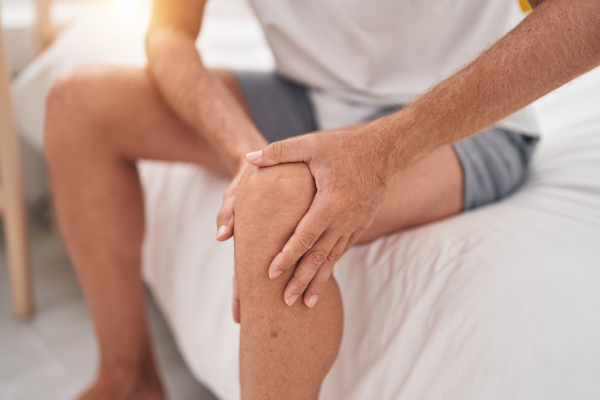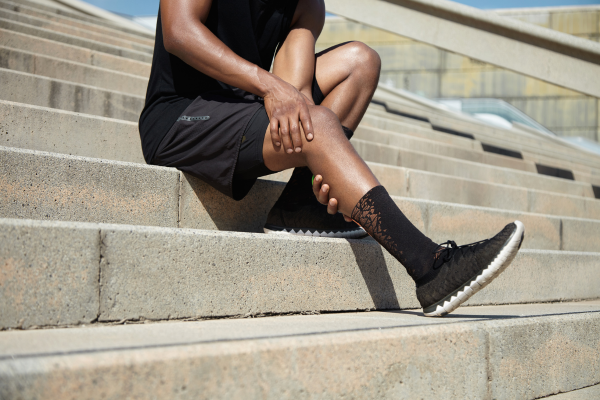Plantar fasciitis is a common condition that will affect one in 10 people in their lifetime. It causes pain and discomfort at the bottom of the foot, mainly around the heel area. While conventional treatments like RICE and stretching offer relief to some, others seek alternative therapies such as osteopathy. This article explores the definition of plantar fasciitis, its symptoms, and the role osteopathy can play in alleviating this debilitating condition.
What is plantar fasciitis?
Plantar fasciitis is a condition caused by tears and inflammation of the plantar fascia. This is a thick band of tissue that runs along the bottom of the foot, connecting the heel bone to the toes.
If plantar fasciitis is not treated, over time the small tears will lead to a bigger tear, causing a lot of pain. This pain can worsen after prolonged standing and walking. The condition is commonly seen in athletes and older adults due to wear and tear over a period of time.
What can cause plantar fasciitis?
Plantar fasciitis can be caused by many different factors that put stress on the plantar fascia. The most common causes include:
Intense exercise
Extreme exercise, starting a new form of exercise or increasing the intensity of exercise can lead to plantar fasciitis, especially without proper conditioning. For example, exercises such as long-distance running, ballet and aerobic dancing can contribute to the condition due to a lot more pressure being put on the heel.
Foot mechanics
Having flat feet, high arches or an abnormal walking pattern can lead to plantar fasciitis. This is due to the uneven distribution of weight across the foot during movement, causing extra pressure. Having a tight Achilles tendon can also lead to the condition as it can affect the mechanics of the foot.
Poor footwearWearing shoes that lack cushioning, proper arch support and have hard soles can increase stress on the heel. The lack of structure from worn-out shoes, high-heels, flip-flops or sandals can lead to overpronation (excessive inward rolling of the foot), straining the plantar fascia.
Obesity
Obesity significantly increases the risk of plantar fasciitis as there is increased pressure on the feet. Excess body weight can alter the way a person walks and increases the impact on their heel pad. An altered walk can lead to improper weight distribution across the feet. Due to increased pressure, the heel pad can flatten and lose effectiveness, leading to direct stress on the plantar fascia.
Age
Over time, wear and tear of the feet from daily activities can lead to plantar fasciitis. Decreased tissue, fat padding and flexibility of the foot comes with age and means that the plantar fascia is more prone to micro-tears and inflammation. The plantar fascia can only withstand a certain amount of stress before it starts to show signs of damage.
Plantar fasciitis symptoms
Plantar fasciitis can cause the following symptoms:
- Heel pain is the most common symptom. This pain can get much worse when taking your first steps in the morning or after a long period of inactivity. It can also intensify when climbing stairs or standing for long periods of time.
- Pain after exercise is a key indicator of plantar fasciitis. When exercising you may find that the pain goes away but returns when you rest or stop the exercise you’re doing.
- Pain relief with rest may indicate plantar fasciitis. This is due to decreased weight-bearing activities as pressure is alleviated off of the plantar fascia.
The pain from plantar fasciitis can be felt at the bottom of the foot, especially towards the heel, and can spread to your ankle and calf muscles, making it difficult to raise your toes off the floor.
Tips to ease plantar fasciitis
It’s important to receive treatment for plantar fasciitis, but you can also try to ease the pain by using a combination of self-care strategies and lifestyle changes. Preventative measures like regular stretching, wearing supportive shoes and maintaining a healthy weight can alleviate pain and prevent the recurrence of plantar fasciitis.
- Make sure to rest and avoid high-intensity activities.
- Engage in low-impact activities such as swimming or cycling to maintain keeping fit but taking extra pressure off of the heel.
- Consider trying plantar fascia strengthening exercises such as a calf stretch or towel stretches to strengthen and stretch the muscles in your foot.
These measures will ultimately ease pain, promote recovery and prevent further injury!
How osteopathy can help plantar fasciitis
Osteopathy offers a holistic approach to treating plantar fasciitis, focusing on the interconnectedness of the body’s musculoskeletal system rather than just alleviating symptoms. Osteopathic treatment typically involves:
Manual therapy: Osteopathic practitioners use hands-on techniques to manipulate and mobilise the muscles, joints, and soft tissues of the foot, ankle, and lower leg. This helps reduce tension, improve flexibility, and enhance circulation in the affected area.
Postural assessment and correction: Osteopaths assess the patient’s overall posture and gait to identify any biomechanical issues contributing to plantar fasciitis. They may recommend corrective exercises or ergonomic adjustments to alleviate stress on the plantar fascia.
Muscle strengthening and stretching: Osteopathic treatment often includes targeted exercises to strengthen the muscles supporting the foot and ankle, which can help stabilise the affected area and prevent the recurrence of plantar fasciitis.
Joint mobilisation: Gentle manipulation of the joints in the foot and ankle can improve the range of motion and reduce stiffness, promoting better function and reducing pain associated with plantar fasciitis.
Patient education: Osteopaths educate patients about self-care strategies such as proper footwear, stretching routines, and lifestyle modifications to support healing and prevent aggravation of symptoms.
Integrated approach: Osteopathy emphasises the body’s ability to heal itself when properly aligned and functioning optimally. By addressing the root causes of plantar fasciitis through these holistic methods, osteopathy aims to not only alleviate acute symptoms but also promote long-term recovery and improved overall musculoskeletal health. This integrative approach makes osteopathy a valuable complement to conventional treatments, offering patients a comprehensive strategy to manage and ultimately overcome plantar fasciitis.
When plantar fasciitis starts to affect your mobility and causes daily pain, it’s important to seek treatment. Osteopathy will help to alleviate plantar fasciitis through manual therapy techniques that will reduce tension, pain and inflammation. Osteopathic techniques will promote healing of the affected area and surrounding tissues.
If you suspect that you have plantar fasciitis get in touch with one of our clinics or book an appointment with us today!





